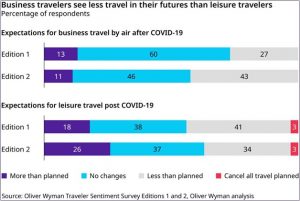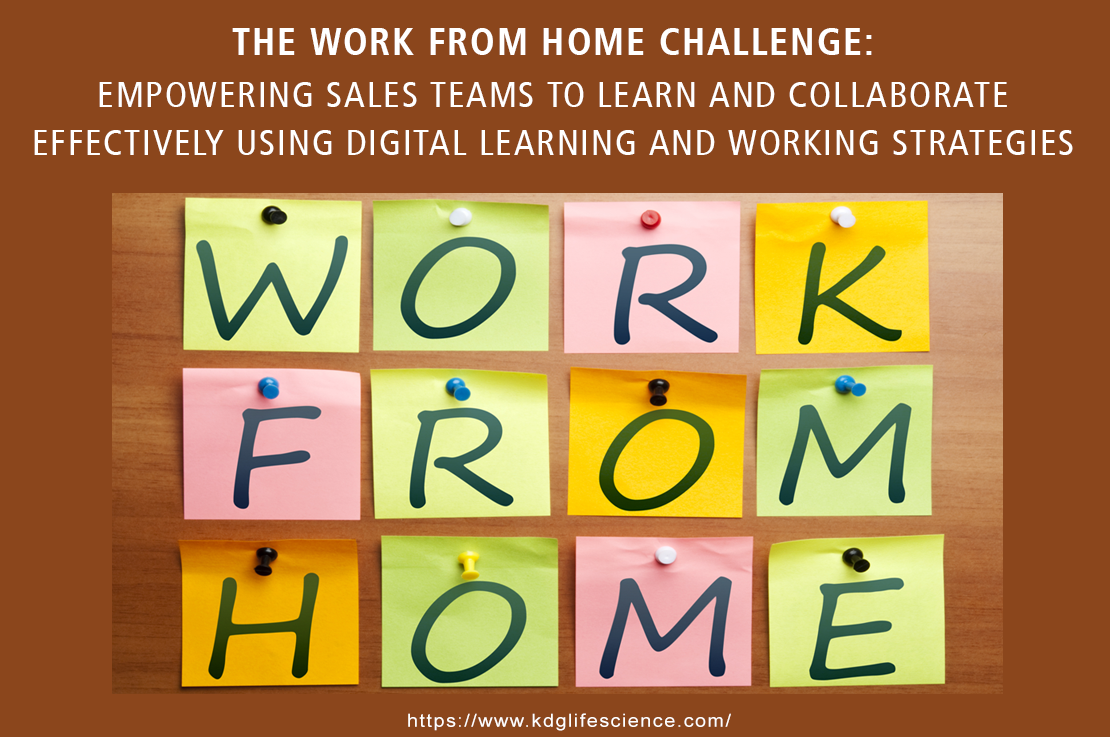There’s a new post-COVID travel-realty brewing that will see a significant decline in business-related travel. Based on a study conducted by travel industry analysts in November 2020, 43% of respondents (of the 2,500 businesses interviewed) confirmed that they would be reducing business travel plans post-COVID. Just six months ago, that number was just 27%.

So, what changed over the course of the pandemic, and how does it impact remote working and digital learning opportunities for sales teams?
The Great Pivot
Well, the previously referred survey gives us an inkling of the new world order. 34% of the responding businesses cited significant post-pandemic health and safety concerns for staff. Another 31% are convinced that teleworking has proved as effective as working from the office or traveling to a client location to deliver a sales pitch or negotiate a deal.
The great pivot from in-person to in-camera and online has just begun. And that’s just the new world order that HR experts, training professionals, and marketing and sales executives must come to terms with.
Two-pronged pivot
The great pivot offers the medical devices, pharmaceutical, biotechnology, and healthcare technologies industry two opportunities to leverage the power of remote learning and working:
- Pivot internally: There’s a huge prospect for companies in the industry to capitalize on digital training strategies. Many businesses employ sales teams that cover large geographic areas. So, when they hold frequent training courses, workshops, and seminars, they typically choose a central point so everyone travels equally to participate. And there lies the opportunity.
The pivot to “no travel involved” digital training, and hosting these events online, delivers real dollar savings to the event sponsors. More importantly, there are employee productivity and event efficiency benefits to garner. For instance, instead of adding half-a-day of participant travel time before and after an in-person training course, event organizers might make better use of that time (a whole day!) by adding a virtual, hands-on lab session instead.
- Pivot externally: The sale of healthcare solutions, whether it is medical devices, pharmaceutical, biotechnology, software solutions, or consulting services, comes with post-sales training and support. Potentially, such support may account for up to 25% of a sales quote. Even with pandemic-related travel restrictions and logistic challenges clients, such as doctors, hospitals, nursing homes, and other healthcare delivery organizations, expect sales organizations to continue delivering training and support. And that presents yet another pivotal opportunity.
Supporting external stakeholders remotely isn’t a post-pandemic paradigm – it’s been a reality for over a decade. Equipping sales teams with the appropriate data and communications tools, including medical device and equipment training simulations, and Virtual Reality (VR)-based training aids, helps deliver seamless customer outreach and support. Additionally, these tools put the power of real-time data analytics and data sciences instantly in the hands of sales and marketing teams, so that it doesn’t erode the virtual client training and support experience.
By integrating tools and strategies to support internal (sales staff, marketing executives, customer service reps) and external (clients, suppliers, device manufacturers) stakeholders virtually, marketing organizations can deliver a seamless training and support experience. When executed correctly, participants in these programs often don’t miss the on-premises or in-person experience.
Building blocks for a successful pivot
So, how might medical device, pharmaceutical, and biotechnology companies leverage remote working and digital learning for their marketing and sales force? Here are some building blocks to consider:
- Onboarding: Studies show that half-hearted onboarding often results in premature exit from the company. But, with COVID-related travel restrictions and social gathering limitations, does that mean your onboarding will (after all!) be a half-baked endeavor? Not necessarily!
Many healthcare companies already have robust onboarding programs and content in place – albeit delivered in traditional Instructor-led Training (ILT) form. It’s easy to repurpose some of that content and convert them into online courses, supported by virtually administered quizzes, exercises, and assessments. Many learning management systems (LMS’s) allow hosted videos and other digital learning resources to support on-demand learning. Trainers might even consider leveraging social platforms to further learning, or gamifying sales training with simple and complex sales scenarios for a more realistic onboarding experience.
- Mobile-first: With many sales teams (and client staff) working from home now, HR departments and training sponsors must make allowance for the fact that sales and marketing activity, training, and sales support might not always follow the strict confines of a “regular” 9-to-5 workday. Using the mobile-first design approach can help bridge that gap.
To support remote employees and customer-employed learners, it is important to create training content, sales pitches, and product documentation with small footprints, so that they are easily accessible on smartphones, tablets, and other mobile devices. Using a responsive design for all training courses will also go a long way to help employees and client staff pivot from ILT to remote digital learning.
- Ongoing contact: It’s easy for sales teams, especially those working in “COVID hot zones” and under restricted conditions, to lose touch with company leadership and work colleagues. Other than up-to-date training content, and on-demand digital job aids (like “How to” videos and “Tips & Tricks” resources), salespeople need people-to-people contact.
In the age of teleworking, company management should institute frequent health and wellness touchpoints to create a sense of “belonging”. Trainers, too, must communicate with learners remotely, focusing specifically on their mental resilience, either using built-in tools supported by the corporate LMS, or videoconferencing platforms such as Zoom or Skype.
- Sales activity updates: Because of the artificial distance between sales leadership teams, sales forces, and colleagues that COVID restrictions have created, many salespeople may risk “being out of the loop” on critical sales activity. Typically, this would have been accomplished through regular (weekly) team meetings or lunch-and-learn sessions.
Consider continuing such contact as part of the remote working and digital learning experience. Provide updates on key accounts; brief sales teams on upcoming sales initiatives; and provide the latest on product or service developments – all of which salespeople may use during a subsequent engagement with clients or prospects.
Most importantly, it’s vital for training managers and customer support leaders to knit these building blocks into a cohesive remote working and digital learning strategy. For instance, having a central digital repository of all sales presentations, product brochures, training videos, and User guides, helps relieve the stress of finding content as and when sales teams need it.
Additionally, it might be a good idea to revamp the corporate inter/intranet so learners, sales reps, post-sales support staff, and other stakeholders can seamlessly and easily navigate through the digital resources. Creating a well-cataloged resource structure, with an intuitive digital dashboard front-end interface, may move digital learning and remote working strategies that much closer to success.


Leave A Comment